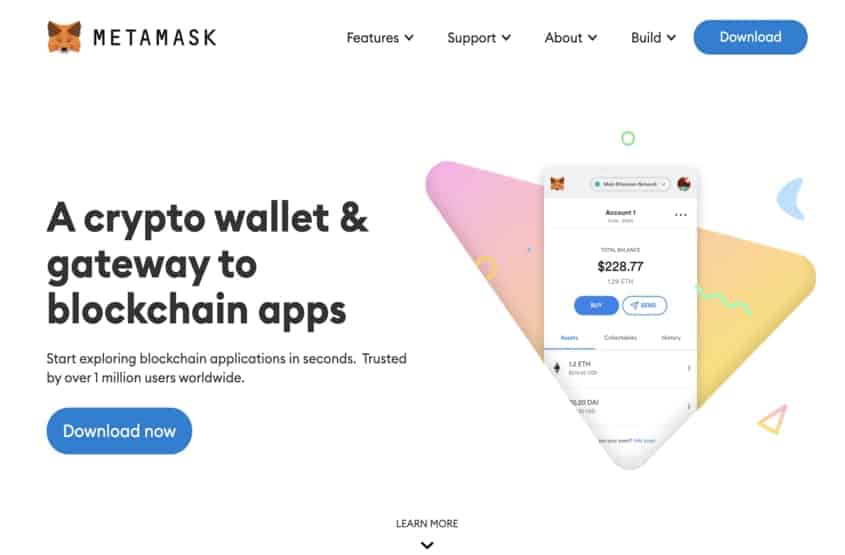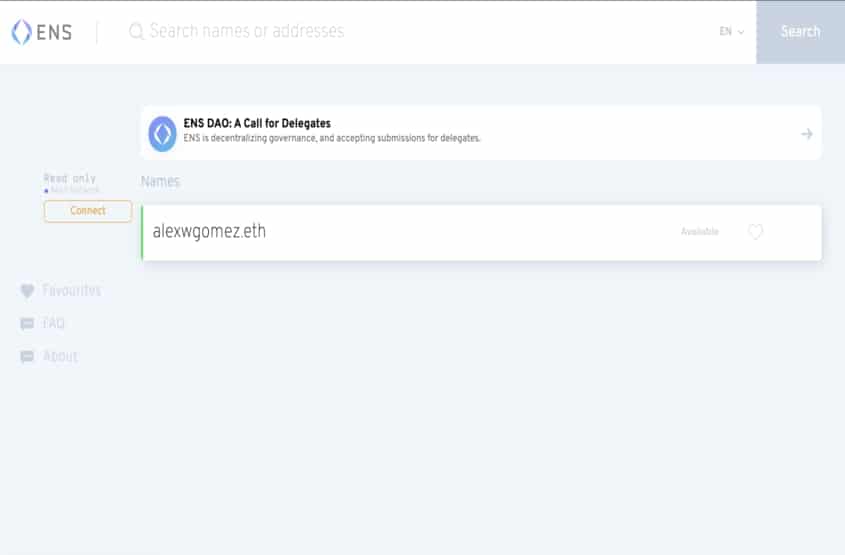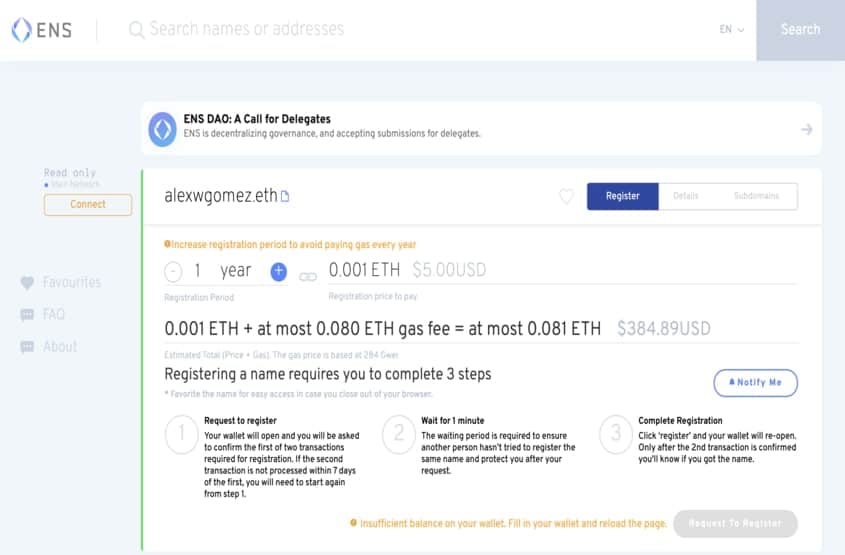If you’ve been keeping up with the online news, you have probably heard of something called ENS, and heard that there was a recent token airdrop. But, what is ENS and why is it so important?
The Ethereum Name Service (ENS) allows you to assign human-readable names to your Ethereum addresses, making it easier to find profiles on the Ethereum blockchain. Instead of searching for long addresses, you can simply use a name to find an Ethereum profile.
Whether or not you are involved in the world of blockchain technology, it’s critical that you know all about ENS and how it works. Keep reading to learn more about the Ethereum Name Service.
What Is ENS?
ENS is an acronym that stands for Ethereum Name Service, and what it does is provide an easy-to-read name for your Ethereum wallet address. Although this may sound a little weird, it’s actually quite simple. Let’s break it down using an example of something you may be more familiar with:
Currently, when you want to go to a website, you type in a name in your search bar. But did you know that any website you visit is actually labeled with a string of numbers (an IP address) that tells the computer where to go?
The only reason you can type in a name like ‘Google’ and end up at Google.com is because of something known as DNS, or the domain naming service.
This service translates the name you type into the search box back to the numbers the computer understands and vice versa.
ENS is essentially a type of DNS, but for the blockchain world. When using the blockchain, each user is given a string of letters and numbers that refers to their specific wallet address.
These strings can be quite long and are impossible to memorize. Now, thanks to ENS, you don’t have to worry about this.
ENS takes the string of numbers and letters that the computer uses to find your wallet and converts them into a word you can easily digest.
So instead of your wallet address being ‘X0yhsgt46thsyWrds’ it will just read ‘Alex.eth’, which is much easier to share with friends and family when you would like them to visit your wallet address or website.
ENS went live on May 4th, 2017, and each domain must have a minimum of 7 characters.
Why Is ENS Important?
ENS is important because it simplifies the use of Ethereum blockchain addresses. If you have a .eth domain, you can utilize smart contracts to create your own subdomains to match with a Dapp (decentralized app) and make it more user-friendly.
Also, ENS now supports DNS (domain name system), meaning you can now use your web2 website domain as an ETH address.
This means that you can send and receive payments using your original web2 domain (.com, .net, .org, etc). ENS allows you to simply import your original domain name to use as an ENS.
Here is the official how-to guide for importing your DNS to ENS. In all reality, ENS is helping bridge the gap between web3 and web2 by allowing the two to interact with each other.
If you don’t already have your own ENS, it may be time to think about registering one. Every day people are registering new ENS names.
Once a name is registered, no one else can register that exact name until it either expires or you would have to buy it from the person who is in possession of the ENS.
Here is a step-by-step guide for registering your own ENS:
How to Get an ENS
Just like domain names, ENS can be bought and sold on the Ethereum blockchain.
Unfortunately, while getting an ENS is similar to buying a domain name, it’s not quite as easy. Below are the steps you can take to get your own ENS for your Ethereum wallet.
1. Get an Ethereum wallet

Before you can get register your own ENS, you will need some ETH, and it must be in a web3 wallet that you can use with an internet browser, such as MetaMask.
2. Open your browser

Be sure this is a browser that is compatible with your Ethereum wallet such as Google Chrome. If you have multiple wallets, ensure you are using the wallet you want your ENS to be attached to.
You can visit the site either through your Web3 browser in MetaMask, or you can connect your wallet once you land on the site.
3. Choose an ENS name

Go to app.ens.domains. Here you can search for the name that you would like to register as your ENS. Keep in mind all ENS names must but at least 7 characters.
If the address you want is already in use, it will say Unavailable and you’ll need to try a different name. If the name is available, proceed to the next step.
If you didn’t visit the site through a Web3 browser such as MetaMask, you will need to connect your wallet in order to register your ENS.
If your Web3 wallet is not connected to the site or doesn’t have enough funds in it to cover the cost to register your ENS, then you will see a message near the bottom of the page that reads: Insufficient balance on your wallet. Fill in your wallet and reload the page.
4. Register your ENS

If your desired name is available, you should see a button to register for it. You’ll follow the steps as directed, using your attached crypto wallet to pay for the ENS.
You’ll have to pay for the registration itself, the registration period (how many years), along with the gas fee which is standard when transacting on the Ethereum blockchain.
You’ll want to verify your transaction after a few minutes to check that it went through. Occasionally, two people may try to register for the same name simultaneously, and one of the transactions will be rejected.
Once the transaction is verified, congrats, you’ve got your own ENS!
What Is the ENS Token Airdrop?
The ENS system is decentralized, meaning that it isn’t owned by anyone entity. But with any big project like ENS, you still need people to govern the direction of the software and possibly future updates, and this is where the $ENS token comes into play.
People who purchase and own ENS tokens will be given voting and other governance rights to the future of the ENS DAO (Decentralized Autonomous Organization).
The $ENS token was launched on November 8th, 2021, if you registered your ENS domain on or before October 31, 2021, when the wallet snapshot was taken, you are eligible to claim $ENS tokens based on the formula.
Several aspects affect an individual’s ability to receive free $ENS tokens from this airdrop. The formula is as follows:
- Age of your .eth address
- How long you’ve paid in advance for your .eth address
- If you have Primary ENS, you get 2x ENS tokens.
NOTE: If you registered your ENS on or before October 31st, 2021, then you are eligible for the $ENS airdrop. You can learn how to claim your $ENS tokens in this article. The last day you can claim your $ENS tokens if you are eligible is May 4, 2022.
Basically, the creators of ENS want to be sure the tokens are going to people involved in the project and will continue to be involved in the project for years to come.
As these are the people they want voting in the DAO. The ENS drop awarded 25 million $ENS tokens to .eth address holders. There is a grand total of 100 million $ENS tokens.
Final Thoughts
ENS isn’t new technology; it’s simply an old technology applied to a new system. And it is essential for the future of blockchain technology because it makes it easier to use and adapt on a widespread basis.
So whether or not you think blockchain might be the future, it may be time to think about registering your very own ENS address.
This way, you can be absolutely sure you get the exact name that you want before it’s too late and it gets registered to someone else!
Similar to domain names, many people will buy several ENS names in hope that they will be able to re-sell the name to someone who desires that specific ENS.
Even if you don’t have a plan for your ENS now, it may be worth registering for in the near future when you have a good idea and need an ENS.

2 thoughts on “What Is ENS? (Ethereum Name Service Explained)”